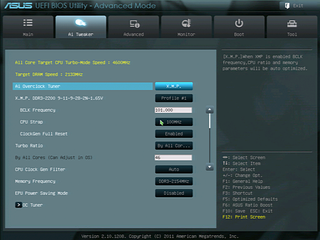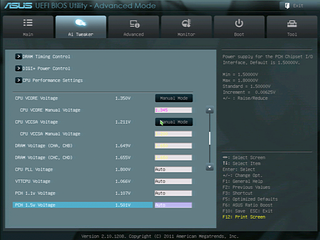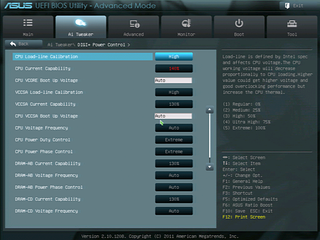Seven $260-$320 X79 Express Motherboards, Reviewed
With 40 lanes of PCIe 3.0 connectivity to host all of our high-bandwidth devices, LGA 2011 certainly qualifies as a premium processor interface. Today we examine seven X79-based motherboards that offer high-end features at a more palatable price.
P9X79 Pro UEFI
Asus appears to be the only firm with a solution to the multiplier issue plaguing our two C1-stepping Core i7-3960X processors. Every X79-based board we've tested from the firm boots and enters Windows at high frequencies using pedestrian multiplier adjustments. Competing platforms require BCLK-based overclocking with our problematic CPUs (and apparently, a small percentage of retail chips based on this stepping as well).

Frequency and ratio controls occupy the top of Asus’ Ai Tweaker menu. Multiplying a 101 MHz base clock by 46x gets us to 4.65 GHz, which is an excellent result at 1.35 V, the setting we deemed safe enough for everyday use.

Voltage controls are found a little farther down the Ai Tweaker’s main menu, providing CPU core, CSA, VTT, and PLL options, along with DIMM and PCH. Our 1.35 V target was achieved at the board’s 1.345 V setting.


Per-channel DRAM reference voltage levels consume much of the remaining Ai Tweaker main menu, while CPU features are diverted to a separate submenu.

The middle Load-Line Calibration option kept our CPU near its target voltage when placed under the stress of twelve Prime95 threads.



Primary, secondary, and tertiary timings are available to please even the most aggressive memory overclocker.
Stay on the Cutting Edge
Join the experts who read Tom's Hardware for the inside track on enthusiast PC tech news — and have for over 25 years. We'll send breaking news and in-depth reviews of CPUs, GPUs, AI, maker hardware and more straight to your inbox.
-
Crashman jprahmanSo when will we see results with a C2?It's going to take around a month to prepare another roundup...so I guess good news comes with bad news, sorry.Reply -
Crashman amuffinfoxconn boards are pretty good.They've been making decent enthusiast boards on-and-off for a while.Reply -
morne Quick coment on looks only (I know its specs that count not looks but oh well)Reply
ASRock X79 Extreme6/GB - very nice all black looks better than gigabytes atempt
Asus P9X79 Pro - new baby blue they use on all the boards... not for me
ECS X79R-AX - looks like my old pentium 2 board with the white slots
Foxconn Quantumian-1 - i like i like gives a feeling of the ROG ASUS boards
Gigabyte X79-UD3 - rip of from the ASRock X79 Extreme6/GB (lol) plus the southbridge heatsink looks old fasion and ugly.
Intel DX79SI - now this board for me looks good actualy more than good looks the best :) must be the scull lol
MSI X79A-GD65 8D - also very nice love the blue + Black.
If you have one of the boards and i insulted it, wasnt the intention, just my view of the board>
-
stingstang My only question is.. Why do you guys need 6 freaking $1050 processors? Good golly gosh!Reply -
ubercake Great descriptive article.Reply
One thing I'm not sure of is the acceptance and actual usage of eSATA. While practical at some level, is anyone actually using this MB feature or is this one of those things the MB producers can skip out on like parallel and serial ports? I'm not sure enthusiasts are all that into using their eSATA ports?
Personally, I think this is one of those money saving opportunities MB producers should consider. -
geekapproved After the X58 anal pounding, you would be a moron to buy a X79. It's life is predicted to be even shorter than X58.Reply -
morne Actualy i agree with you ubercake, i have never used my E-sata, and with usb 3.0 out doubt anyone still uses E-sata if they have before.Reply
